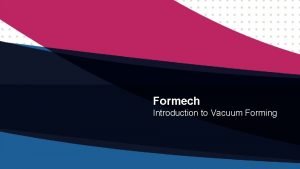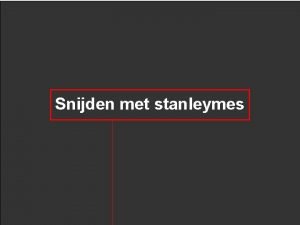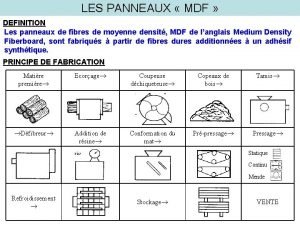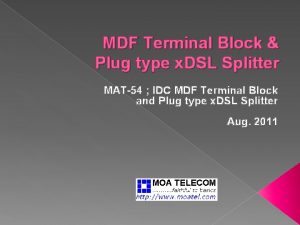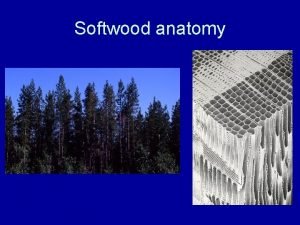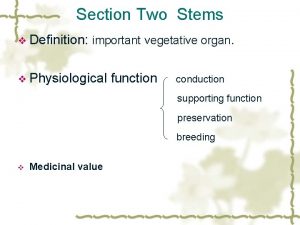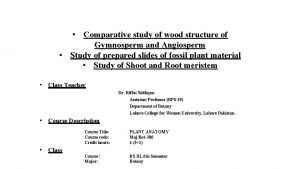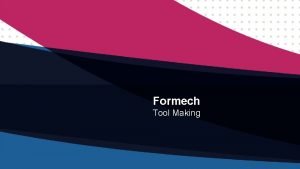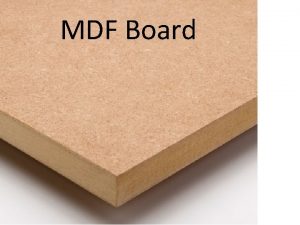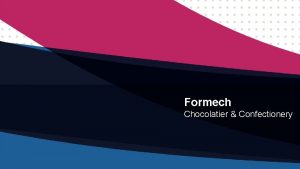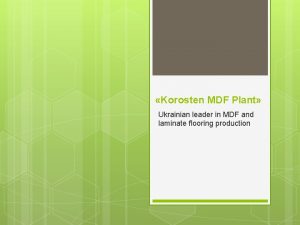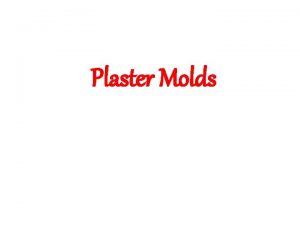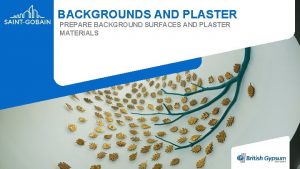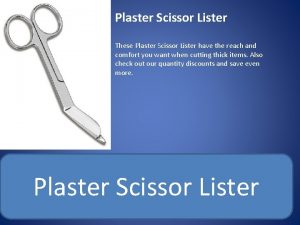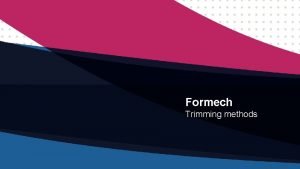Formech Tool Making Content Wood or MDF Plaster












- Slides: 12

Formech Tool Making

Content Wood or MDF Plaster, fibre glass and cast resin 3 D Printing Cast aluminium CNC machined resin and aluminium CNC machined porous resin Vacuum holes Tool mounting – foam tapes Tool mounting – screws Question & Answer

Wood or MDF Preparing tools for vacuum forming can be costly and time consuming depending on the method. Wooden tools are sometimes used for smaller production runs. Standard woodworking equipment e. g. table saw, bandsaw, disc sander and table routers can be used working from sketches and 2 D drawings. ! Wooden tools show joins and tend to wear out quickly, which can result in poor quality vacuum formings.

Cast or moulded tool Plaster of Paris – very fragile, difficult to mount and moisture/powder can damage the vacuum pump. Plaster of Paris Fibre-glass – can result in good quality tools but beware of the tool overheating and it will need internal support to stop the tool collapsing. Cast resin – epoxy resins are ideal for production runs. These can be cast up in-house and the resin tools sanded to a very smooth finish ! Cast resin is the best out of the three, followed by fibre-glass and then Plaster of Paris Fibre Glass Epoxy resin

3 D Printing/Rapid prototyping/Additive manufacturing Requires 3 D CAD drawing ability to create the CAD file, which can be expensive. 3 D CAD file You can scan existing products to create a 3 D CAD file which is sent to the 3 D printer. Tools can be made overnight on the 3 D printer. Surface finish of the tool depends on the type of 3 D printer selected. Most 3 D printed models can be cleaned up using sand paper. ! 3 D printed models vary in strength and resilience and are generally more suited to prototypes and small runs; although 3 D technology is changing rapidly, with new materials and processes being introduced continually. Painted or Metallised vac forming

Cast aluminium Traditional patternmaking can be used to produce your wooden pattern. The pattern is then sent to the foundry for the casting of the aluminium. Traditional pattern Cast aluminium tools may require some finishing in order to achieve a blemish free surface. The finished tool is very strong and will produce 100, 000 or more parts. Some large tools are cast and then often CNC machined to the exact size because it is more cost effective than machining solid aluminium. ! Aluminium pattern Casting can take a few weeks depending on when the foundry can find a slot in their production for your job.

CNC machined resin & aluminium Requires 3 D CAD drawing ability, which can be very expensive. 3 D CAD model Longer lead times to produce the CAD and also to machine the tooling board or aluminium. Aluminium is the best material – hard wearing and produces fine detailed vacuum formings. CNC machined tooling board ! Casting can take a few weeks depending on when the foundry can find a slot in their production for your job. CNC machined aluminium

CNC machined porous resin There are two suppliers of this material and it is approximately 10 times the cost of conventional tooling board. 4 up porous tool for hollow chocolate moulds Metapor porous resin 500 mm x 10 mm £ 184. 85 - 12/04/2016 from www. Alchemie. com or directly from the manufacturer - info@portec. ch www. portec. ch Alwapor porous resin (ALU 1 and ALU 2) 200 mm x 30 mm - £ 77. 62 – 12/04/2016 from www. johnburn. co. uk ! All of these porous resins are quite soft in comparison to aluminium and have to be treated with care Close up of detail

Vacuum holes are essential in all non-porous tooling materials Use 1 mm drill bits for materials less than 1. 5 mm thick and 1. 5 mm drill bits for thicker materials. The holes need to be placed in every cavity or recess where the plastic may struggle to pull right down into the bottom corners ! Long reach drill bits are expensive and break easily, so take care when drilling. 160 mm long x 1. 5 mm drill bit

Tool mounting – with foam tape When prototyping and producing short runs less than 10 off you can use 1 mm thick double sided foam tape. Add some washers as spacers in case the foam compresses and the tool seals off the vacuum hole on the table Modelboard or tooling board tool CNC machined You can also use tabs of Velcro for short runs which allow you to make quick tool changes and at the same time hold the tool down to the table ! The longer you leave your tool mounted with foam tape, the more the tape will cure and be harder to remove from the table. Underside of tool showing double sided foam tape and washers

Tool mounting – screws If you want to secure wood, model board or resin tools to a base board use 3. 5 mm twinthread wood screws with a 3. 0 mm pilot hole. Twin thread wood screws 3. 5 mm diameter Aluminium tools need to be drilled and tapped and secured with machine screws typically M 5 or M 6 ! Do not use machine screws on for mounting resin tools – they will strip out Countersunk machine screws – M 5 or M 6

Q&A
